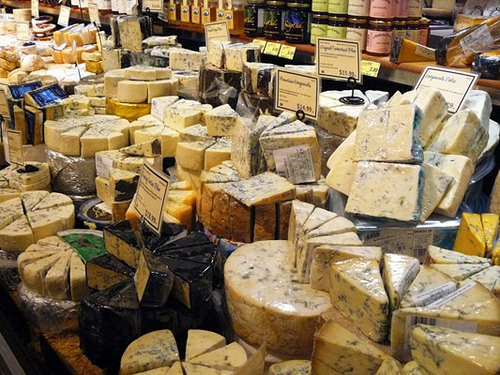That salmonella-in-sprouts at Jimmy John’s has spread to 15 states.
The U.S. Centers for Disease Control reports from Nov. 1 to Dec. 21, 2010, the same Salmonella serotype I 4,[5],12:i:- had sickened 89 individuals from 15 states, with 50 of those from Illinois.
Case-patients range in age from 1 to 75 years, with a median age of 28. Sixty-eight percent of patients are female. Among persons with available .jpg) information, 23% reported being hospitalized. No deaths have been reported.
information, 23% reported being hospitalized. No deaths have been reported.
Preliminary results of this investigation indicate a link to eating alfalfa sprouts at a national sandwich chain.
To reduce the risk of illness:
• Children, the elderly, pregnant women, and persons with weakened immune systems should avoid eating raw sprouts of any kind (including alfalfa, clover, radish, and mung bean sprouts).
• Cook sprouts thoroughly to reduce the risk of illness. Cooking kills the harmful bacteria.
• Request that raw sprouts not be added to your food. If you purchase a sandwich or salad at a restaurant or delicatessen, check to make sure that raw sprouts have not been added.
At one local eatery, we’re known as the no-sprouts customers.
That national sandwich chain would be Jimmy John’s. Although the company pulled sprouts two days ago from Illinois restaurants, they need to pull all raw sprouts nationally, figure out where the sprouts came from to limit exposure to others, and then seriously evaluate whether they should even be offering raw sprouts.
And when Jimmy John’s owner Jimmy John Liautaud wrote franchisees in a letter Tuesday saying that about 88 people were sickened in 15 states and that of 40 interviewed, 28 ate at Jimmy John’s and 25 had sprouts, he .jpg) obviously knew what CDC is now reporting today. So why would you limit the yanking of sprouts to just Illinois? Why did it take CDC at least an additional two days to report what Illinois folks have been reporting for days?
obviously knew what CDC is now reporting today. So why would you limit the yanking of sprouts to just Illinois? Why did it take CDC at least an additional two days to report what Illinois folks have been reporting for days?
This is going to be expensive.
A table of raw sprout-related outbreaks is available at http://bites.ksu.edu/sprout-associated-outbreaks-north-america-1990-2009.

 the establishment located at 12780 Maxi Sherbrooke East, Montreal, because it could be contaminated with salmonella.
the establishment located at 12780 Maxi Sherbrooke East, Montreal, because it could be contaminated with salmonella. may have become soiled or contaminated. Specifically, the owner was observed throughout the day to altemately perform cheese making functions, such as stirring cheese curd with bare hands and wrapping cheese in grape leaves, with outside activities, such as milking/feeding livestock, without any hand washing being observed.
may have become soiled or contaminated. Specifically, the owner was observed throughout the day to altemately perform cheese making functions, such as stirring cheese curd with bare hands and wrapping cheese in grape leaves, with outside activities, such as milking/feeding livestock, without any hand washing being observed. .jpg) brushed pants with a bare hand and was later observed standing over a bucket of drained curd in the cheese room with the soiled pants coming in to contact with the edge of the bucket.
brushed pants with a bare hand and was later observed standing over a bucket of drained curd in the cheese room with the soiled pants coming in to contact with the edge of the bucket. educar a través del mundo. Si usted quiere proponer un tema o mandar fotos para los folletos, contacte a Ben Chapman a benjamin_chapman@ncsu.edu.
educar a través del mundo. Si usted quiere proponer un tema o mandar fotos para los folletos, contacte a Ben Chapman a benjamin_chapman@ncsu.edu.
.jpg) doors
doors
 3. U2
3. U2 source de E. coli O157:H7 était un aliment, une boisson ou un manipulateur d’aliments. Les officiels des services de la santé étudient les sources possibles en analysant les échantillons des aliments préparés.
source de E. coli O157:H7 était un aliment, une boisson ou un manipulateur d’aliments. Les officiels des services de la santé étudient les sources possibles en analysant les échantillons des aliments préparés.
.jpg) 40 interviewed, 28 ate at Jimmy John’s and 25 had sprouts. Liautaud said the chain’s restaurants and main sprout supplier have tested negative.
40 interviewed, 28 ate at Jimmy John’s and 25 had sprouts. Liautaud said the chain’s restaurants and main sprout supplier have tested negative. As we all recover from the flu, our appetites are only mediocre. In the spirit of things, I cooked an Archer Farms spinach and goat cheese pizza for dinner tonight. I added olives because that’s one of the few things Sorenne currently loves. When looking at the cooking time and temp I noticed detailed directions that seem straight from this blog:
As we all recover from the flu, our appetites are only mediocre. In the spirit of things, I cooked an Archer Farms spinach and goat cheese pizza for dinner tonight. I added olives because that’s one of the few things Sorenne currently loves. When looking at the cooking time and temp I noticed detailed directions that seem straight from this blog: So I did (exactly as pictured). After cooking the pizza at 400F for about 18 minutes, I took it out and tried to eye the thickest part. Then I tried to put the thermometer in somewhat sideways being careful not to poke through the other side. To take the picture, I had to prop the thermometer on my spatula. The process made a big gash in my pizza toppings and the cheese stuck like glue on the thermometer, but it was easy to see the pizza was well above 165F.
So I did (exactly as pictured). After cooking the pizza at 400F for about 18 minutes, I took it out and tried to eye the thickest part. Then I tried to put the thermometer in somewhat sideways being careful not to poke through the other side. To take the picture, I had to prop the thermometer on my spatula. The process made a big gash in my pizza toppings and the cheese stuck like glue on the thermometer, but it was easy to see the pizza was well above 165F.